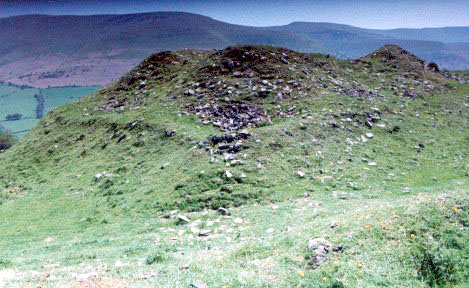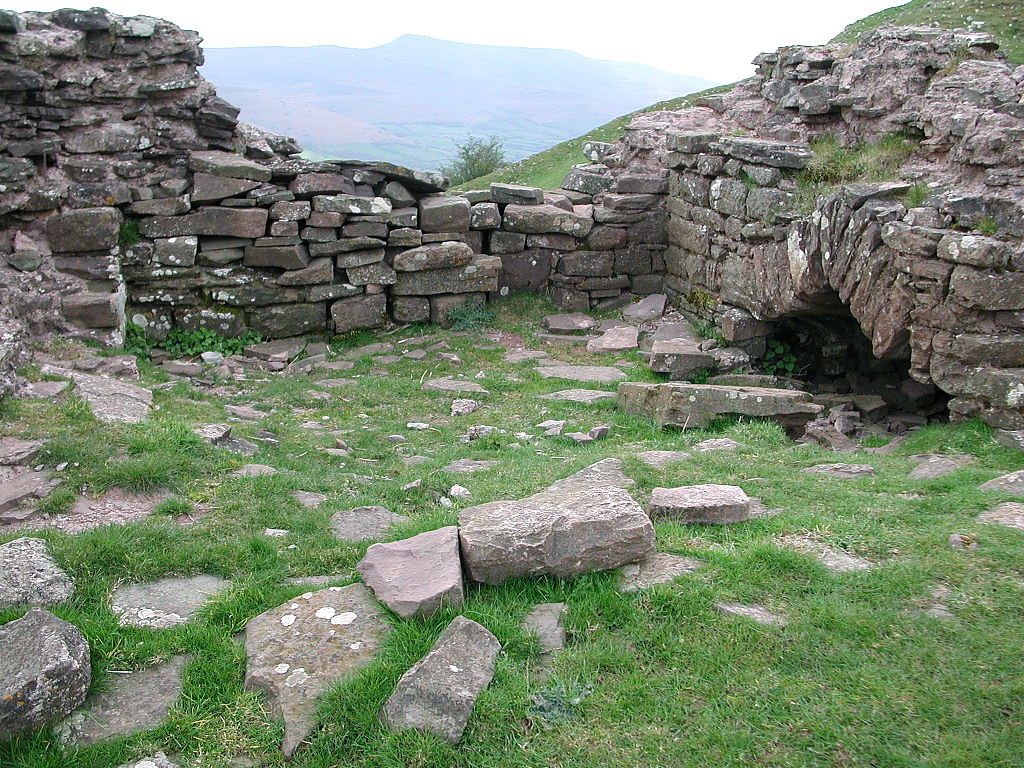Castell Bwlch y Dinas
also known as Castell Dinas
The remains of this castle are on a hilltop just to the east of the A479 near Pengenffordd which is 3 miles south-east of Talgarth in southern Powys.
SO 179301
Written by Paul Remfry
For more details visit
http://www.castles99.ukprint.com/Essays/Wales/BwlchDinas.html
http://www.castlewales.com/ddinas.html


Writing in the 16th century, Leland describes the castle as “a goode mile from Blaen Leveni (Blaenllyfni)” – it’s actually 5 miles as the crow flies and appreciably further by road. He describes it as “upon the toppe of a notable hille, it is now ruinous almost to the hard ground, there be manifest tokens of three wardes, waulled about…” He goes on to say that the castle was destroyed by the local inhabitants of these parts during the reign of Henry IV. Destruction of this Duchy of Lancaster castle by local adherents of Owain Glyndwr seems most likely. The castle was in the hands of the Mortimers of Chirk from 1310 to 1322 and the Mortimers of Wigmore from 1326 to 1330 and then again from 1352 until 1425.
The site of Castell Bwlch y Dinas keep is today marked by the huge pile of grass grown rubble which overlies the masonry remains of this once proud structure. One mound of debris is about fifteen feet high and seems to indicate a masonry tower keep about 65 feet by forty feet externally. Surrounding the ruin of this great tower was a further wall, or chemise which was about 100 by 80 feet.
The keep commands the upper, northern end of the hill fort enclosure and particularly dominates the inner ward. Entrance to this inner courtyard was gained from both north and south, and no doubt entrance to the keep was gained from here, probably by a forebuilding now hidden amongst the jumbled foundations between the south curtain and the chemise. This design would appear to be similar to that of the keep at Chepstow which also has an original first floor entrance to the south. Similar hall keeps may have existed at Monmouth, Wigmore, Clifford and a little later at Grosmont. Placed in strategic positions around the walls are the remains of several towers, all of which appear to have been rectangular.